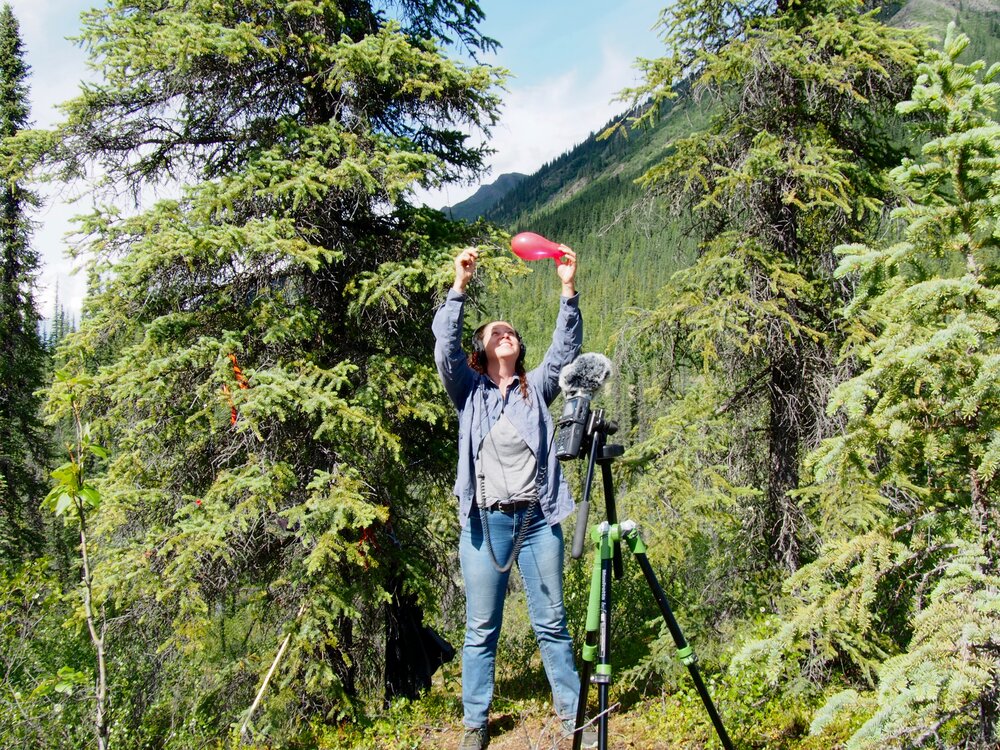2019
*Work in Progress*
I’ve been studying methods to record and recreate unique and fragile ecologies using techniques based on sound using the “impulse response method” borrowed from Tim Weaver (Emergent Digital Practices, University of Denver).
During the summer solstice in 2019, eight tree physiologists from the University of California, Davis, including myself, studied trees in the Brooks Range of northern Alaska at the terminus of the latitudinal tree line. Trees in this area represent the northernmost trees in the United States and are inside the Arctic Circle. In addition to studying the trees themselves I wanted to recreate the forest using sound using the impulse response method. This was accomplished by popping a balloon and recording the resonance it made. The recorded sound will then then be processed with convolution reverb software in Max 8.
About the Tree Study:
We sought to understand how trees behave physiologically in the 24-hour daylight conditions inherent to the summer solstice. Our question arose from the fact that, during the night, trees fix carbon captured from photosynthesis into carbohydrates—the building blocks of trees. To answer our question, we conducted experiments on white spruce (Picea glauca) trees exposed to 24-hour daylight during the summer solstice. We gathered data on photosynthesis and stomatal conductance around the clock. We put light spectrum sensors on the trees, gathered wood core samples for anatomy and leaves to study levels of carbohydrates, and sampled RNA to gather information on enzymatic activity.
← Back to gallery